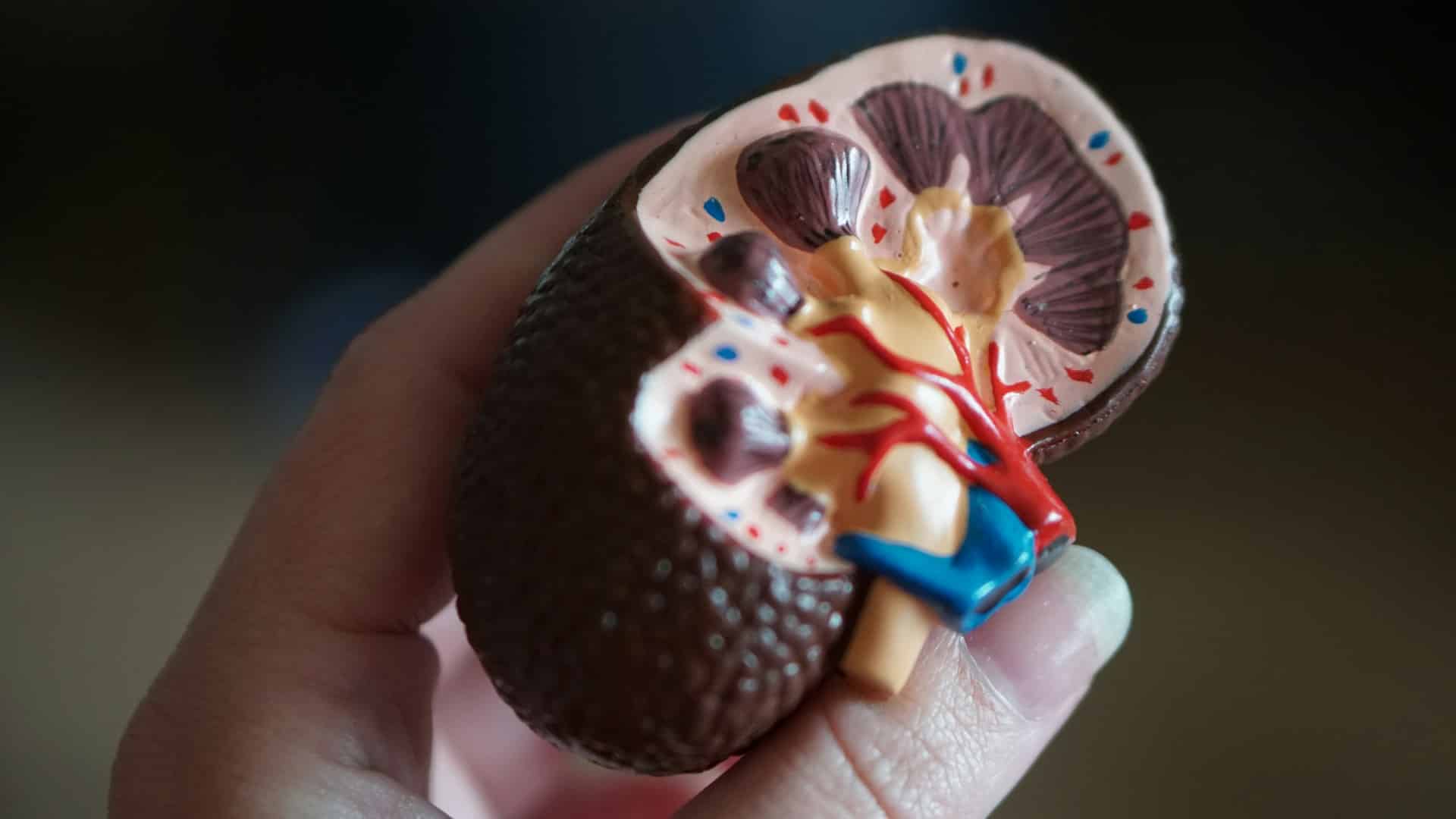Background: A 66-year-old patient with possible coronary artery disease, CAD in ESRD. She has been on peritoneal dialysis for 5 years. She is getting evaluated for a kidney transplant from a living related donor.
When she walks 4 blocks, she gets shortness of breath and some chest discomfort that resolves with rest. She has a history of hypertension, diabetes, and hyperlipidemia.

She is euvolemic. There appears to be no pleural effusions based on the clinical exam. Her blood pressure is 118/72. Her electrolytes are perfect. The patient still has some residual renal function and makes some urine.
When discussing the next step, the patient states that she could not exercise as much as she used to and feels she is merely deconditioned.
Nephrology in collaboration with the transplant team refers to cardiology for an evaluation of possible CAD in ESRD. The goal is to address the heart concern as well as allow the transplant evaluation to proceed accordingly.
Please answer the following questions:
Which approach is best in this circumstance to assess for CAD in ESRD?
* Percutaneous coronary angiography
* Coronary calcium scoring
* PET scan (positron emission tomograph)
* Exercise cardiac stress test
* Dobutamine stress echocardiography
percutaneous coronary angiography
This patient is at high risk of having CAD in ESRD and would benefit from coronary angiography.
Patients with chronic kidney disease (CKD) are at a higher risk for cardiovascular disease (CVD), such as CAD in ESRD.
A
True
B
False
A
True
Age-adjusted cardiovascular mortality among dialysis patients is lower than in the general population.
A
True
B
False
B
False
Cardiovascular disease, CVD, accounts for a significant proportion of deaths among patients with end-stage renal disease (ESRD).
A
True
B
False
A
True
Patients with advanced chronic kidney disease (CKD) and End-Stage Kidney Disease are at low risk for cardiac disease.
A
True
B
False
B
False
Cardiovascular complications account for nearly 30% of deaths in kidney transplant recipients with a functioning allograft.
A
True
B
False
A
True
Discussion:
Cardiovascular Disease Screening in Patients with Chronic Kidney Disease and End-Stage Kidney Disease Getting Evaluated for a Kidney Transplant
Risk Factors and Mortality
Patients with chronic kidney disease (CKD) and end-stage renal disease (ESRD) face a significantly higher risk of cardiovascular disease (CVD) compared to the general population. The mortality rate because of CAD in ESRD is 10–20 times greater than in the general population. As kidney function declines, that is the estimated glomerular filtration rate (eGFR) declines, cardiovascular disease becomes a leading cause of death, accounting for up to 50% of deaths in end-stage kidney disease patients.
Factors Driving Cardiovascular Disease
Cardiovascular disease in chronic kidney disease and end-stage kidney disease patients is influenced by traditional risk factors like hypertension, dyslipidemia, age, smoking, and diabetes, as well as non-traditional factors such as arteriosclerosis, vascular calcification, endothelial dysfunction, and inflammation. These factors contribute to both coronary artery disease (CAD) and non-coronary artery disease-related issues, like left ventricular hypertrophy (LVH) and left ventricular dilatation.
Screening Guidelines and Strategies
Screening for cardiovascular disease in high-risk patients, such as those with advanced CKD, ESKD, and kidney transplant recipients, is crucial. Screening strategies depend on factors like symptoms, functional capacity, previous cardiovascular history, age, and risk factors such as smoking, hypertension, hyperlipidemia, diabetes, and family history of early coronary artery disease.
Screening Approaches
- Low-risk, asymptomatic kidney transplant candidates may not benefit from screening.
- High-risk candidates, like those with diabetes, high blood pressure, age greater than 45 years, dialysis vintage, and angina, may require more intensive screening.
- Noninvasive imaging may not be as effective in predicting coronary disease in high-risk populations, making coronary angiography the preferred test.
- Asymptomatic, intermediate-risk pretransplant candidates can undergo noninvasive cardiac testing, such as dobutamine or exercise stress tests.
- Obese, intermediate-risk patients might benefit from a PET scan for better imaging.
Coronary Calcification and Risk Prediction
While coronary calcification and calcium score progression can predict cardiovascular events in the general population, their relationship in advanced CKD and kidney transplant recipients requires further study.
Take-home message: The gold-standard approach to assess for CAD in ESRD in those getting worked up for a kidney transplant is percutaneous coronary angiography. Angiographic CAD has been linked to higher mortality rates and can predict major adverse cardiac events (MACE). Many transplant centers prefer addressing a patient’s CAD in ESRD prior to kidney transplantation rather than after kidney transplantation.
Inspiration: The assessment of coronary artery disease in patients with end-stage renal disease, National Library of Medicine
Related:
Quiz: 5 Months Post Kidney Transplant With Fever And This Lung CT Scan by Michael Aaronson, Lincoln Nephrology and Hypertension
Dialysis Patient With Hair Loss, Status Post Failed Transplant, Quiz With Solution – written by Michael Aaronson


